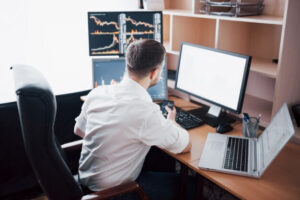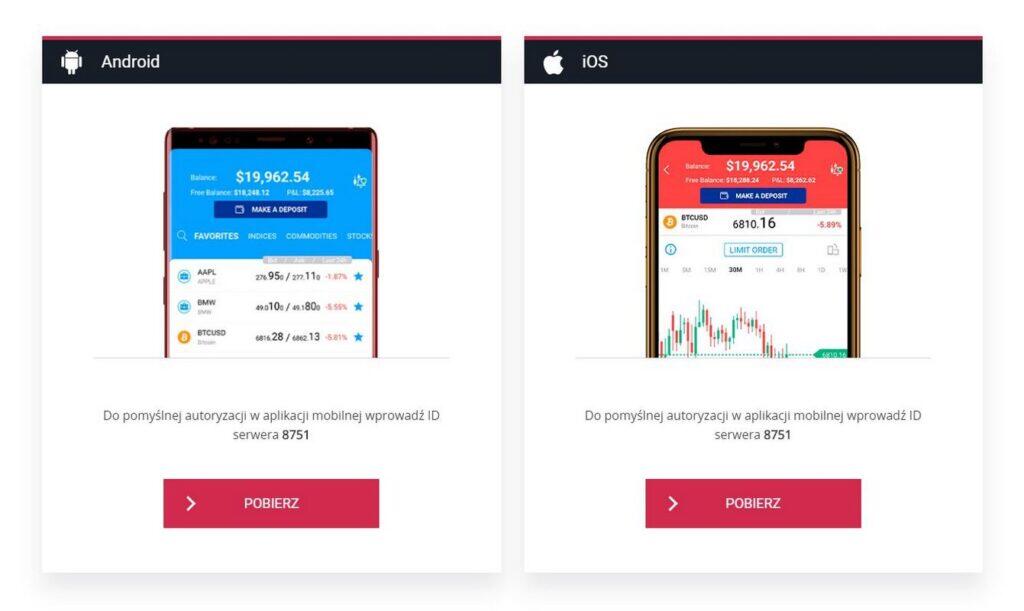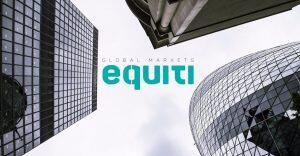Contents:


I created this website to show you what I believe is the best possible way to get your start. For chapter seven, you will learn how to use histograms effectively in OpenCV. The histogram will help you determine the contrast, brightness and intensity distributions of the images that you are working with. OpenCV supports working with grayscale and color histograms.
Small-scale (sub-organ and cellular level) alpha-particle dosimetry … – Nature.com
Small-scale (sub-organ and cellular level) alpha-particle dosimetry ….
Posted: Wed, 26 Oct 2022 07:00:00 GMT [source]
If you are starting with openCV its a no brainer. The only regrettable thing is that there is no math involved and that algorithms used are described maybe too briefly. Which on the other hand allows you to go through the book really fast. It’s safe to say that I have a ton of experience in the computer vision world and know my way around a Python shell and image processing libraries.
Use your Raspberry Pi to build awesome computer vision projects.
However these things don’t affect the quality of the code examples themselves. You also get a Case Studies PDF that has more information. Alberto Fernández Villánis a software engineer with more than 12 years of experience in developing innovative solutions. In the last couple of years, he has been working in various projects related to monitoring systems for industrial plants, applying both Internet of Things and big data technologies. As of 2013, he is a registered and active user on the Q&A OpenCV forum.

Then in https://forexhero.info/ ten, you learn how to use gradients and edge detection to refine what you learned in chapter nine. This will allow you to find the edges of the coins in the photo. This chapter focuses on using the Laplacian and Sobel methods for gradients. Then you learn about using the Canny Edge detection technique. Then in chapter five, you discover how to draw lines, rectangles and circles. You can change the width, position, and color of each of these shapes.
Files
This book has value as an introduction to computer vision. I’ve heard that OpenCV is a real pain to install… Well, hate is a strong word…but if you honestly hate this book and feel like you haven’t learned the basics of computer vision, then I don’t want your money.

No need to configure your development environment and waste time installing packages. Just download my pre-configured Ubuntu Virtual Machine (guaranteed to run on OSX, Linux, & Windows) and start learning. A few months ago I taught a developer the basics of object tracking…he then went on to build surveillance systems to track people in video. In this comprehensive guide, you’ll learn everything you need to know to master YOLO. With detailed explanations, practical examples, and step-by-step tutorials, this book will help you build your understanding of YOLO from the ground up. In the fourth chapter, you learn the basics of images from the point of view of OpenCV.
The first argument to this function is the image we want to draw on. Next, we draw the line using the cv2.line function. This book is intended for developers and programmers who understand the basics of computer vision and are ready to apply their skills to solve actual, real-world problems.
Share with your team
Most computer vision textbooks cost well over $200. And they don’t even include 4+ hours of video tutorials or a downloadable, pre-configured Ubuntu virtual machine with all your computer vision libraries pre-installed! For less than the third of a cost of used textbook, you could be learning the basics of computer vision and image processing this weekend. If you’re serious about learning computer vision and OpenCV, there is no doubt in my mind that this is the best bundle for you.
- OpenCV for Python enables you to run computer vision algorithms smoothly in real time, combining the best of the OpenCV C++ API and the Python language.
- Are you interested in computer vision and image processing, but don’t know where to start?
- The last two arguments are the color and thickness of the ellipse.
- Thresholding is the term used to describe focusing on objects or areas of interest within an image.
- Just download my pre-configured Ubuntu Virtual Machine (guaranteed to run on OSX, Linux, & Windows) and start learning.
Chapter three is where you will finally get into some code. Here you learn how to load images into OpenCV and display them to the user. This is useful for converting between different image formats, but more importantly it is helpful for saving off your data when you need to.
Use the power of OpenCV, TensorFlow, and PyTorch to solve complex computer vision problems in under 30 minutes with our easy-to-follow code examples. My personal Raspbian .img file pre-baked with Python + OpenCV already installed. Let’s be realistic — there’s only so much content that I can fit into a book…and that’s exactly why I’ve created the Practical Python and OpenCV companion website.
Automating Excel with Python
There’s no doubt that the next big startup is going to involve computer vision. Using the techniques in this chapter, you just might be able to launch the next big thing…and make a ton of money. He works for The New York Museum of Natural History in the Botany department.
Hi, I’m Yacine Rouizi – a self-taught developer passionate about machine learning, deep learning, and computer vision. My mission is to make these complex topics accessible to everyone through hands-on tutorials and clear explanations. Interested in computer vision, but don’t know where to start? Practical Python and OpenCVis your quick start guide to learning the basics of computer vision and image processing…in a single weekend. This is a very well written book, but I think it would serve better as an image processing book rather than being a computer vision book.
I’m here to distill all my years of experience into bite size, easy to understand chunks, while sharing the tips, tricks, and hacks I’ve learned along the way. You’ve gone through the books, but still have a few followup questions? Select this option and I’ll hop on a 1-on-1 call with you and your team.
In this tutorial, you saw how simple it is to draw shapes on an image with OpenCV. These functions are very useful for image processing and computer vision. The fourth and fifth arguments are the starting and ending angles of the ellipse. For example, we can draw half an ellipse by setting the end_angle variable to 180 degrees.
Top Data Labeling Tools For Machine Learning in 2023 – MarkTechPost
Top Data Labeling Tools For Machine Learning in 2023.
Posted: Mon, 13 Feb 2023 08:00:00 GMT [source]
Just reply to your purchase receipt email within 30 days and I’ll refund your purchase. You have specific questions about a computer vision problem you are trying to solve — and I’m here to help. I’ll answer your questions and get you and your team instantly on track. Upgrade to PyImageSearch University and the Practical Python Hardcopy Bundle to start your journey towards mastering computer vision today. End of chapter discussions that cross-reference relevant PyImageSearch blog posts, allowing to build a strong computer vision and OpenCV foundation quickly and effectively. Access to additional resources and guides to continue your computer vision + OpenCV education.
The case studies are good at the end of each chapters with practical applications and blogs linked to each chapter provides a way to learn by doing. After reading my book, if you haven’t learned the basics of computer vision and image processing, then I don’t want your money. That’s why I offer a 100% Money Back Guarantee.
The first two opencv introductions to the cv2.ellipse function are the image we want to draw on and the center of the ellipse respectively. I bought Practical Python and OpenCV a couple of years ago during one of its authors Kickstarters. I started reading it and then got busy with other things. The past couple of weeks, I decided to give the book another go and was able to finish it. Note that I started reading the 3rd edition of the book without realizing there was a 4th edition. After finished the 3rd edition, I compared it to the 4th side by side and it looks like they are nearly identical, so I don’t think it matters all that much.
Please report metadata errors at the source library. If there are multiple source libraries, know that we pull metadata from top to bottom, so the first one might be sufficient. Enter your email address below to join the PyImageSearch Newsletter and download my FREE 17-page Resource Guide PDF on Computer Vision, OpenCV, and Deep Learning. To wrap up the book, Adrian uses OpenCV to find the contours of the coins so that he can count the coins in the image.
How Open Source Can Benefit AI Development – DevOps.com
How Open Source Can Benefit AI Development.
Posted: Thu, 16 Mar 2023 07:00:00 GMT [source]
I recognize the fact that setting up your development environment isn’t the most fun thing in the world — not to mention that it’s also quite time consuming! OpenCV is considered to be one of the best Open Source Computer Vision and machine learning software libraries. It helps developers build complete projects on image processing, motion detection, and image segmentation.
- Luckily, Hank remembers back to a machine learning course he took during his masters program.
- But this books seems like a compilation of blog posts.
- I would highly recommend the readers take a computer vision class or read another book which explains the background knowledge.
- Enter your email address below to join the PyImageSearch Newsletter and download my FREE 17-page Resource Guide PDF on Computer Vision, OpenCV, and Deep Learning.
- That said, always be cautious when downloading files from the internet.
OpenCV for Python enables you to run computer vision algorithms smoothly in real time, combining the best of the OpenCV C++ API and the Python language. To make it as easy as possible for you to learn the basics of computer vision and image processing I have released my own personal Raspbian .img file with OpenCV pre-installed. This is the exact Raspbian image I use for my own projects and is compatible with the Raspberry Pi 2, Raspberry Pi 3, and Raspberry Pi Zero W. Are you interested in computer vision and image processing, but don’t know where to start? My new book is your guaranteed quick start guide to learning the fundamentals of computer vision and image processing using Python and OpenCV.
